#turkish history
Text
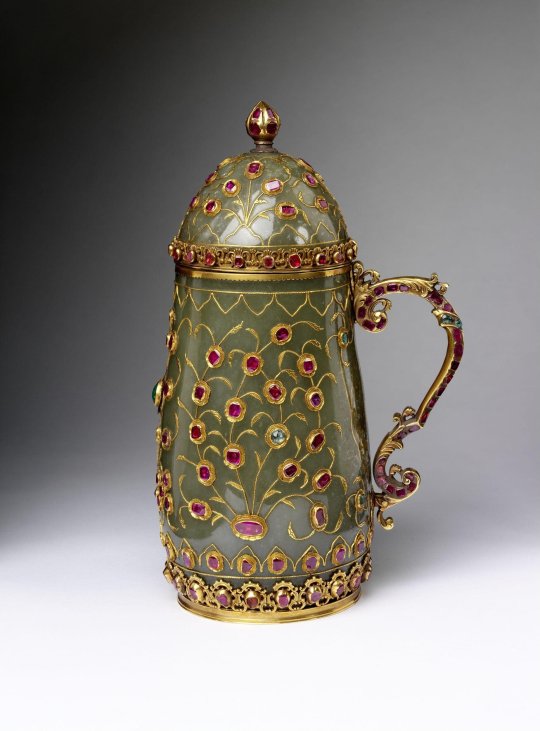
Jade tankard inlaid with gold, rubies, and emeralds, Turkey, circa 1550-1650
from The Victoria & Albert Museum
967 notes
·
View notes
Text
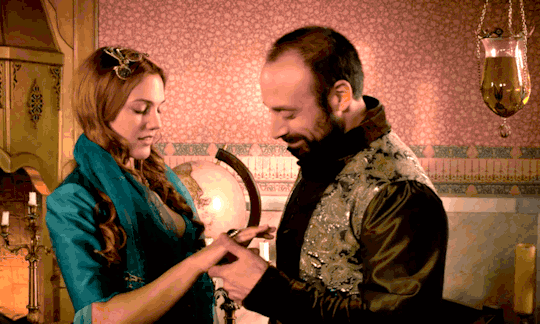


Some thought Roxelana used seductive powers, even potions, to induce the love Suleyman appeared to bear her. They called her witch. — Leslie Peirce, Empress of the East: How a European Slave Girl Became Queen of the Ottoman Empire
#Muhteşem Yüzyıl#Magnificent Century#mcedit#Muhtesem Yuzyil#perioddramaedit#weloveperioddrama#Hurrem Sultan#The Concubine Hurrem#Blind Fury#It Is the Policy and Nothing Personal#ottoman history#history#Sultan Suleiman#Awkward-Sultana#period drama#historical drama#turkish history
64 notes
·
View notes
Text
Çanakkale Zaferi Blog-1
ÇANAKKALE-🇹🇷
Canla, başla, kanla, her türlü fedakârlıklarla alınmış zaferimizi öğrenmeye muhtacız.
Çanakkale, Avrupa'nın "Hasta Adam" damgasını vurduğu Türk Milleti'nin varlık mücadelesidir.
Sadece Türkler değil aynı zamanda Suriyeli, Filistinli, Azerbaycan, Kürt, Arnavut...
Din kardeşlerimiz kendi vatanlarında rahatlatlarını bırakıp tek bir amaç için -vatan savunması- Türklerle omuz omuza, baş başa, tüm imkanlarıyla savaştılar. Neticede bu savaşın zaferinde sadece Türkler değil savaşan kardeşlerimizin de payı vardır.
Bunu unutmaksa en büyük hainliktir.
Savaşan din kardeşlerimizle kenetlenmiş, ezan minarelerde sönmesin, Fatih'in fethettiği topraklara gâvur ayağı basmasın düşüncesiyle canımızı dişimize takmıştık.
İtilaf donanması, 506 topla günde ortalama 25 bin mermi gönderiyor, top gülleleri adres sormuyordu. Neticede bir millet ateşle imtihan oluyordu.
Bizim mermimiz yok muydu?
Diye soracak olursanız eğer:
Evet vardı. Ammavelakin elimizde çoğu eski, eski olduğu için ateş gücü son derece düşük olan 150 top vardı.
Durumu düşmana çaktırmamak için bulunan tek yol, mevzilere soba boruları yerleştirip top görüntüsü verilmesinden ibaretti. Bazen ise bulunan çalı çırpılar soba borularının önünde ateşe veriliyor "Top atıldı" görüntüsünü güçleştirmeye çalışıyordu...
Çanakkale'de 15.700 Boşnaklı şehit oldu...
252.000 Türk şehit oldu...
Çanakkale'ye gelen 25.000 Arnavutlu'dan 15.000'i şehit oldu...
Çanakkale'ye gelen 900 Filistinli'den geri dönen olmadı, şehit oldu...
Çanakkale'ye gelen 30.000 Suriyeli'den 600'ü şehit oldu...
3000'den fazla Azerbaycanlı şehit oldu...
Ve Kürtler...
Laz...
Suudi Arabistan...
Afganistan...
İran...
Irak...
Yemen...
Ve Diğerleri...
Şuan hepsi Türklerle baş başa, omuz omuza uyuyorlar.
Vatan sağolsun...
Vatan için savaşanlar sağolsun...
Çanakkale'yi Geçilmez yapanlardan Allah razı olsun...
___________
Bastığın yerleri toprak diyerek geçme, tanı!
Düşün altındaki binlerce kefensiz yatanı!
-Mehmet Akif Ersoy-
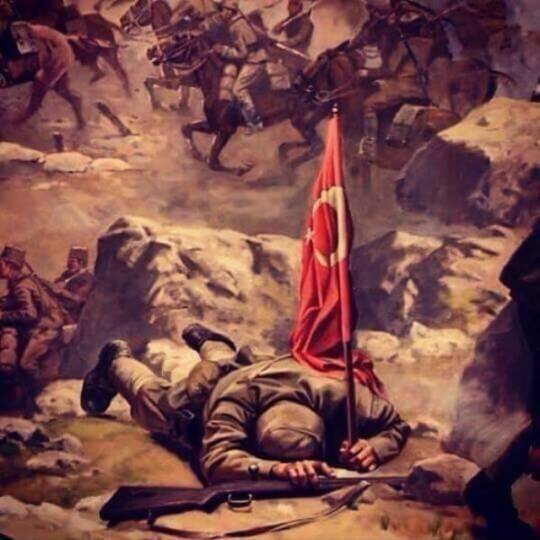
#Çanakkale Zaferi#Çanakkale#Çanakkale geçilmez şehitler ölmez#zodiag666#cansu ayyıldız#türk tarihi#tarih#dünya tarihi#yakın tarih#tarihte bugün#vatan bölünmez#vatan sağolsun#vatan#Çanakkale şehitleri#bilim tarihi#türk#türkler#turkish history#türkiye#çanakkale#Çanakkale geçilmez#Çanakkale zodiag666#Çanakkale resmi#Türkiye şehitleri#şehit#şehitler ölmez
51 notes
·
View notes
Text
Sultan Murad IV, redoubtable warrior and calligrapher? A calligraphic piece in Isl. Ms. 441
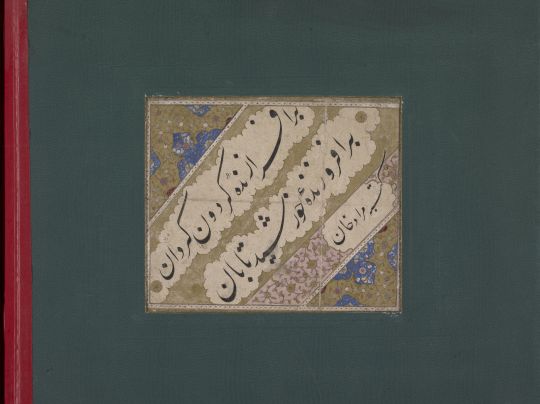
Calligraphic piece in nastaʻlīq (talik) signed by the calligrapher, most likely the Ottoman Sultan Murad IV (r.1623-1640). Fol.4b in Isl. Ms. 441, Islamic Manuscripts Collection
Enjoy this post from Sumeyra Dursun, 2023 Heid Fellow, drawn from her research in the Islamic Manuscripts Collection. Sumeyra is a doctoral candidate in the history of Islamic arts at Yildiz Technical University in Istanbul.
#libraries#archives#special collections#special collections libraries#libraries and archives#islamic manuscripts#special collections and archives#hat sanatı#hattat#yazmalar#yazma eserler#ottoman culture#ottoman history#turkish arts#turkish history#research fellowships#fellowships#heid fellows
20 notes
·
View notes
Text
Round 1: Match 2


Video Links
Cyan
Suleiman
#overly sarcastic productions#overlysarcasticbracket#osp#osp cyan#osp colors#suleiman the magnificent#turkish history#polls#round 1
34 notes
·
View notes
Text

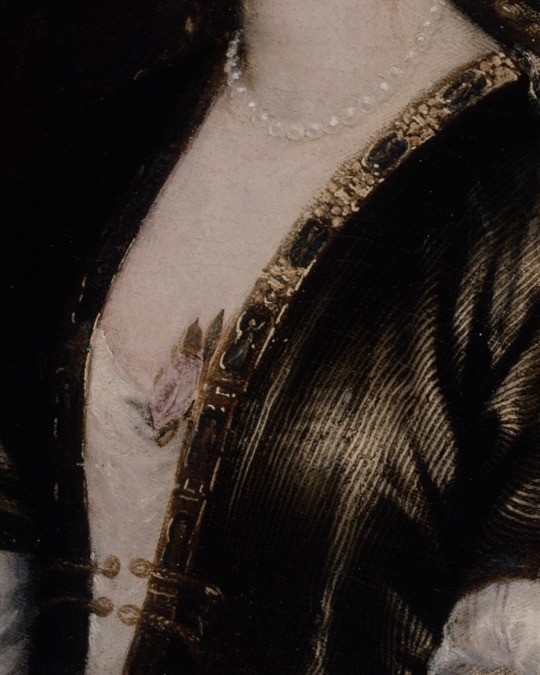
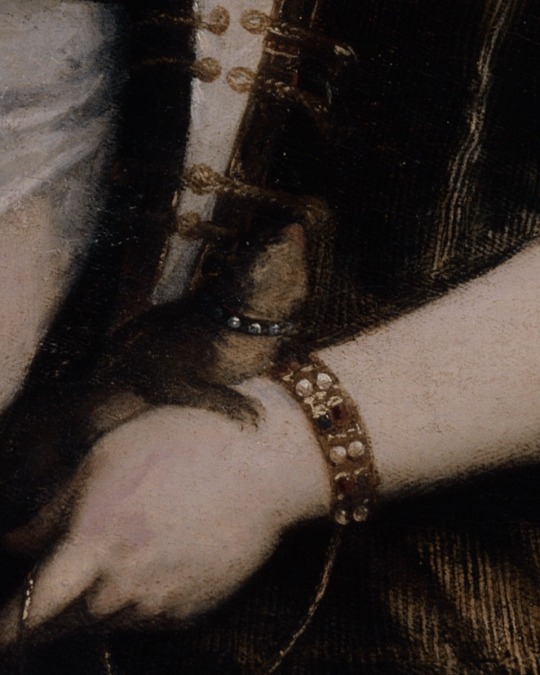

💌 Details of the famous painting of “Roxelana” by Italian artist, Tiziano Vecelli, circa 1515-1550.
Hürrem Sultan, or “Roxelana”, was the only legitimate wife of the famous Ottoman sultan, Suleiman the Magnificent — thus, she became the most influential woman in Ottoman history. Of Ruthenian origin, she was known for her bright auburn hair and profound love of and interest in poetry, which captured the sultan’s eyes and saw her rising from the status of concubine to that of founder of an era known as the “Sultanate of women”.
Under the pen name of “Muhibbi”, the sultan composed the following poem for his beloved wife:
(💌) “Throne of my lonely niche, my wealth, my love, my moonlight.
My most sincere friend, my confidant, my very existence, my sultan, my one and only love.
The most beautiful among the beautiful...
My springtime, my merry faced love, my daytime, my sweetheart, laughing leaf...
My plants, my sweet, my rose, the only one who does not distress me in this world...
My Constantinople, my Caraman, the earth of my Anatolia,
My Badakhshan, my Baghdad and Khorasan
My woman of the beautiful hair, my love of the slanted brow, my love of eyes full of mischief...
I’ll sing your praises always
I, lover of the tormented heart, Muhibbi of the eyes full of tears, I am happy.”
#hürrem sultan#haseki hurrem sultan#roxelana#ottoman empire#sultan suleiman#ottoman history#turkish history#medieval#medieval history#middle ages#poetry#poems#turkey#history#historical figures#historic#paintings#painting detail#historical painting#female history#women history#royal family#royals#royalty#royalcore
241 notes
·
View notes
Text
Giuseppe Donizetti — served Napoleon on Elba and accompanied him during the Hundred Days

Portrait of Giuseppe Donizetti later in life
Giuseppe Donizetti was born into poverty in 1788, in the Northern Italian city of Bergamo. The eldest of his siblings, he worked from a young age, training as a tailor’s apprentice. His true talent was in music, which was spotted early on in his life.
Giuseppe was conscripted in 1808 at the age of 20. He served the Napoleonic Kingdom of Italy in the Seventh Italian Regiment. He fought against Austria in the War of the 5th Coalition in 1809. He spent the years of 1811, 1812 and 1813 in Spain.
In 1811, he was became ill en route to Spain and was hospitalized at Castelnaudary in France. 43 years later in 1854, he wrote about it to the court of the Ottoman Empire:
“Constantinople, November 22, 1854. Mémoire to His Highness Achmed-Fethy Pasha. Finding myself in a comfortable position thanks to the beneficences of Our August and Glorious Sovereign, I cede to the Hospital of Castelnaudary (Aude), in which I was ill in 1811, the portion coming to me of the legacy left by the Emperor Napoleon I to the Battalion of the Island of Elba. The papers establishing my right to participate in the credit opened up by the Decree of August 5, 1854, issued at Biarritz by His Imperial Majesty the Emperor Napoleon III, I have been obliged to send to France at the time when I was honored with a brevet as Chevalier of the Legion of Honor. Your Highness's Very humble Servant, Joseph Donizetti.”
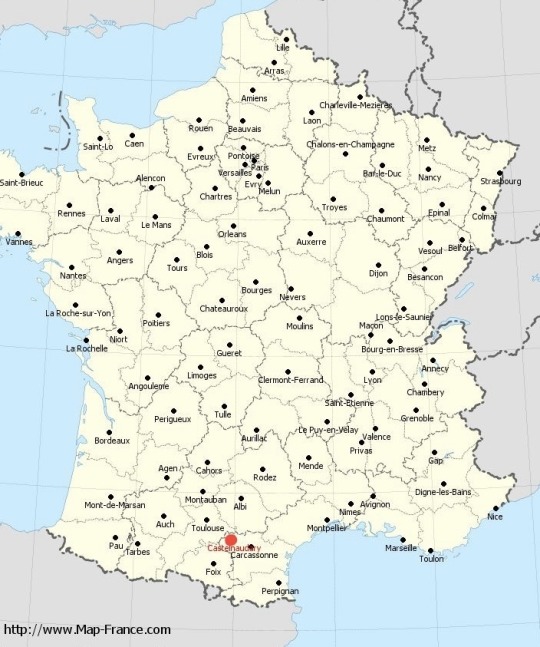

Location and photograph of Castelnaudary
After the dissolution of the Kingdom of Italy and the First French Empire, he enlisted in the French military and was stationed on the island of Elba as a military flutist. It was on Elba, in the town of Portoferraio, where he was married in 1815.
That same year, he accompanied Napoleon during the Hundred Days, traveling with him on the same ship from Elba to Antibes, France. He likely fought at the battle of Waterloo.
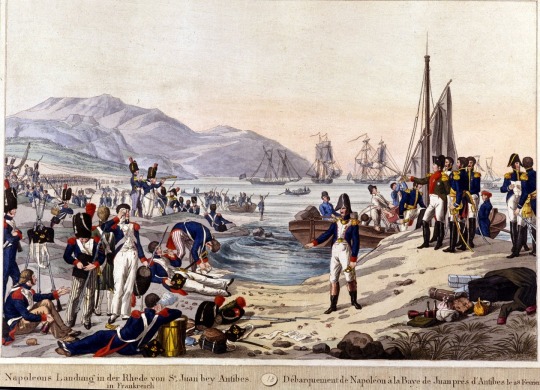
Landing of Napoleon I in Antibes in 1815
After Napoleon:
The Austrians took control of Northern Italy after the fall of Napoleon. According to the historian Emre Aracı, Giuseppe was “a greal admirer of Napoleon and the French […] Giuseppe strongly opposed his country’s domination by the Austrians. Evidence shows that he secretly took part in the Carbonari resistance and even appeared at court trials.”
Giuseppe Donizetti became a composer, and had a full career as Instructor General of the Imperial Ottoman Music. He even composed the first National Anthem of the Ottoman Empire, the Mecidiye Marşı. His main legacy is introducing Western marching music to the military of the Ottoman Empire.
He was employed by the Ottoman government on 17 September 1828 for an annual salary of 8,000 francs. This was considered a very high salary by his family. Giuseppe’s trouble with the Austrian authorities after the fall of Napoleon may have been a motivator for him to leave Italy. He moved to Constantinople at the age of 39 and spent the rest of his life there.
Giuseppe’s patron was Sultan Mahmud II, who ruled from 1808 to 1839, and Sultan Abdulmejid I, who ruled from 1839 to 1861.
According to the historian Emre Aracı:
“The Donizettis were so well-liked in the Ottoman capital that when fire broke out near their house Ahmet Fethi Pasha, the sultan's brother-in-law, ordered all the houses surrounding the maestro's home to be razed to the ground in order to prevent the flames reaching the building.”
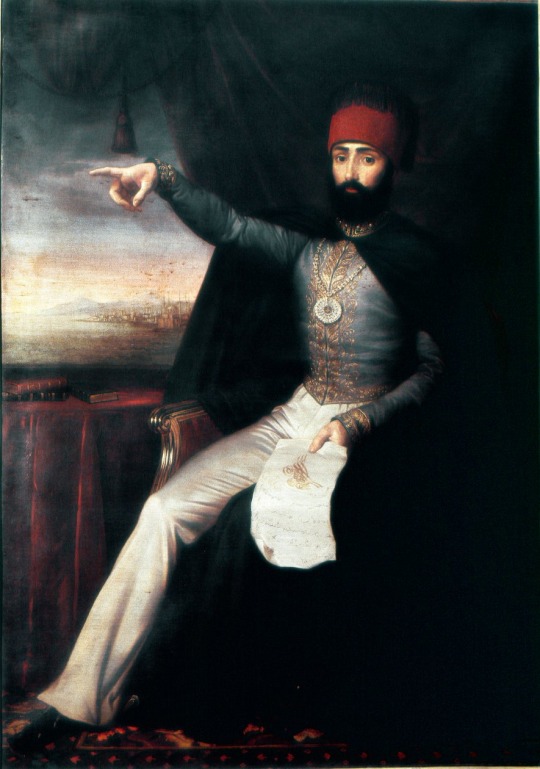
Sultan Mahmud II
His brother, Gaetano, called him his fratello turco— Turkish brother, writing to his friend that “He loves Constantinople, to which he owes everything.”
Giuseppe even encouraged his brother to move to Constantinople, but Gaetano declined. “I do not want to play the fool like my brother, the Bey, who, after having earned more than I perhaps, stays there in ancient Byzantium to scratch his belly between the plague and the stake,” wrote Gaetano.
Giuseppe moved to Constantinople two years after the creation of the Imperial Musical School (Muzıka-i Hümâyûn), which was an Ottoman institution which trained its students in Western style of music. He was specifically recruited as an expert to help lead this effort.

Giuseppe’s younger brother, Gaetano. By Francesco Coghetti, 1837
Gaetano Donizetti, though younger than Giuseppe, became the much more successful and internationally well-known brother, producing nearly 70 operas in his life. Gaetano is considered one of the most successful opera composers in history. Because of this, Giuseppe is widely known as Gaetano Donizetti’s brother. The historian Emre Aracı pointed out that this has actually been good for Giuseppe’s reputation because it has enabled him to be remembered when many other composers have been forgotten.
Both brothers were awarded the Ottoman Order of Nișan-i Iftihar. When Gaetano received the award at the Ottoman Embassy in Paris, he proudly said: “Napoleon belongs to two centuries, I to two religions.”
Burial:
Giuseppe died in 1856, and is buried in the vaults of St. Esprit Cathedral, on the European side of Constantinople, in the district called Pera (now called Beyoğlu). According to Emre Aracı, the district “was once the home of a thriving Christian community”. The Church was built in 1846, 10 years before Giuseppe died.
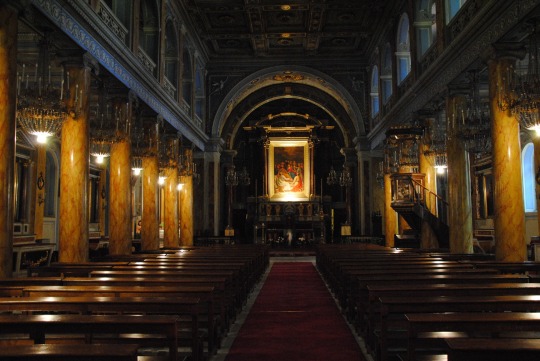
Interior of St. Esprit Cathedral
Giuseppe and his brother Gaetano are two great success stories and examples of people from impoverished backgrounds who go on to live prosperous and interesting lives.
Sources:
Herbert Weinstock, Donizetti and the World of Opera in Italy, Paris and Vienna in the First Half of the Nineteenth Century, 1963
Emre Aracı, Giuseppe Donizetti at the Ottoman Court: A Levantine Life, The Musical Times, Vol. 143, No. 1880 (Autumn, 2002), pp. 49-56
Emre Aracı, Giuseppe Donizetti Pasha and the Polyphonic Court Music of the Ottoman Empire, The Court Historian, Volume 7, 2 December 2002
Özgecan Karadağli, Western Performing Arts in the Late Ottoman Empire: Accommodation and Formation, 2020
#Giuseppe Donizetti#Donizetti#napoleonic era#napoleonic#Ottoman Empire#ottoman#napoleon#napoleon bonaparte#gaetano donizetti#turkey#turkish history#ottoman history#first french empire#French empire#history#19th century#france#french history#the hundred days#Francesco Coghetti#Istanbul#Constantinople#1800s#19th century history#Napoleon’s soldiers#opera#composers#composer
9 notes
·
View notes
Text

Day 25: Antiochis of Tlos!
Antiochis was the daughter of Diodotus, a prominent Hippocratic physician in Roman Tlos, a city in modern Turkey. Antiochis likely apprenticed under her father, but she soon either took over his practice or set out on her own, becoming a successful doctor.
Unlike many female physicians and healers, Antiochis saw and treated diseases in both male and female patients - and was not only tolerated in this by the authorities, but commended. The city council voted to honor her, and may have made her an official city physician. Eventually Antiochis, like many prominent Romans, commissioned a public statue for herself; while the statue, like most in the city, is long-vanished, the inscription remains.
Her work was respected beyond Tlos; her likely contemporary, the Greek physician Heraclides of Tarentum, dedicated a book to her, while a few centuries later Galen, the legendary Roman medical researcher, cited her work.
#antiochis of tlos#roman history#turkish history#greek history#history#awesome ladies of history#october 2023#my art#pen and ink
14 notes
·
View notes
Text
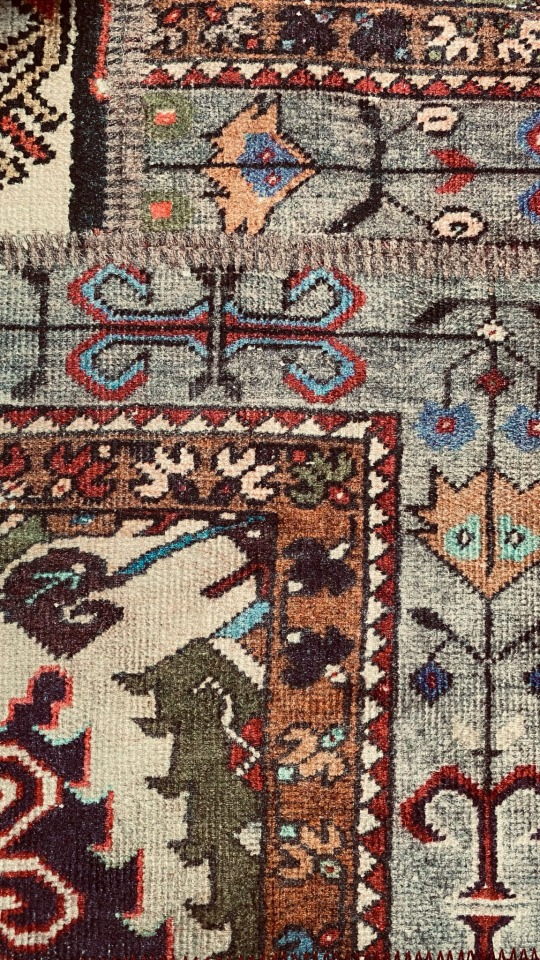
traditional Turkish kilim/rug
#444minerva777#kilimrug#traditional art#turkish mythology#turkish culture#pattern#turkish history#animal motif#motifs#art and culture#artistic#turkish#oriental rugs#turkic#türk kültürü#türk tarihi#halı#desen#sanatsal#keşfedilmeyen#takip edilesi bloglar#takipleselim#ok to rb#i need likes
27 notes
·
View notes
Text
Sultan Mehmed II X Emine Gülbahar Mükrime Hatun
In January 1448 a son was born to Mehmed Çelebi in Thracian Dimotika, by a slave girl named Gülbahar. The boy was given the name of Bayezid and was later (1481) to mount the Ottoman throne as the second sultan of this name.
There is no doubt that this union was beneath Mehmed's station: Gülbahar bint Abdullah, whom Turkish legend sub- sequently transformed into a "daughter of the king of France," was a Christian slave of Albanian origin.
It is equally certain, as we shall see later on, that Mehmed preserved a particular affection for her as long as he lived. From the fact that Gülbahar Hatun bore her child in Dimotika, it may be inferred that Mehmed was back in Europe by the beginning of 1448 at the latest and perhaps even that he was residing there. Dimotika was the site of an old Byzantine castle, with a double ring of walls, preserved by the sultans and sometimes used for the Ottoman state treasury.
Babinger, F. (1978). Mehmed the conqueror and his time. Princeton University Press.
P.s. She also bore him a daughter named Geverhan Sultan.
#sultan mehmed ii#Emine Gülbahar Mükrime Hatun#gulbahar hatun#rise of empires: ottoman#ottoman empire#turkish history#history#european history#Dimotika#Geverhan Sultan#albanian#ottoman women#ottoman culture#slave girl
3 notes
·
View notes
Text

Sanavber Hatun
There is a 14-page deed of foundation from 1628.
Sanavber's Tag is Sanavber bint Abdülmennan. Mostly converts were referred to as "bint Abdullah", but there were also converts who appeared as bint Abdülmennan (e.g. Mahidevran, Mimar Sinan), so the theory that she could be a slave cannot be ruled out.
Murad IV's first child was born in 1627, and as we know, a concubine's stipend gets higher as soon as she gives birth. Would there really be enough money for a young concubine and young mother to build a foundation?
Perhaps Sanavber was a high-ranking servant and could therefore afford a foundation.
Nothing more is known about her.
#youtube#ottoman empire#sultanmurad#sanavberhatun#hatun#cariye#kösemsultan#history#tumblr#turkish history
4 notes
·
View notes
Text

#coins#Alexander the Great#ancient coins#history#Istanbul Airport Museum#Istanbul Airport#Turkish history#Istanbul#Turkey
3 notes
·
View notes
Text




















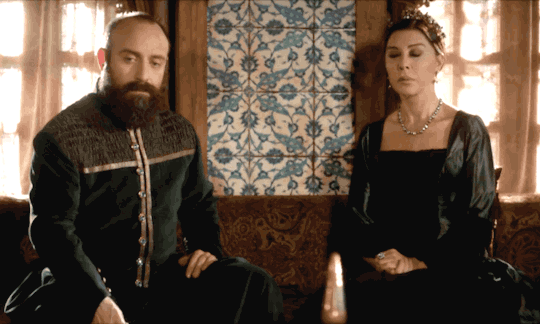





“The crucial role played by a prince’s mother before he ascended the throne was translated into a more institutionally secure and publicly visible role when the prince became sultan and his mother
valide sultan. The valide sultan continued to carry on her roles as tutor and protector of her son...The valide sultan continued to instruct the sultan as she had the prince.”—The Imperial Harem Women And Sovereignty In The Ottoman Empire, Leslie P. Peirce
#Muhteşem Yüzyıl#Magnificent Century#mcedit#Muhtesem Yuzyil#weloveperioddrama#perioddramaedit#period drama#historical drama#Hafsa Sultan#Valide Sultan#Ayse Hafsa Sultan#history#Turkish history#Ottoman History#Sultan Suleiman#Awkward-Sultana#Sultan Suleyman
43 notes
·
View notes
Text
THE LIFE OF NEFISE HATUN
The one who is considered the first imperial princess to intervene in politics; Nefise Melek Hatun. She, who was given various honorific titles such as Sultan Hatun, and Mirhiali Hatun.
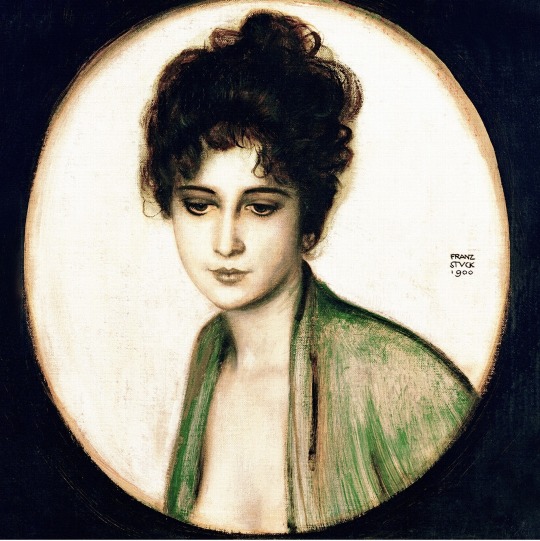
She was born as the daughter of Murad I, and sister of Bayezid I around 1355 and 1360 in Bursa. Not much is known about her early life, we do not have proven information about the identity of her mother.
The first time Nefise Hatun is noticed is during her political betrothal to Alaeddin Bey.
The wedding, which took place around 1377-1381 consisted of a large bride price of; 100 thousand coins, 100 horses, 10 balls of silk, Turkish velvet, gold jewelry, corals, diamonds, red rubies, turquoises, ten thousand camels and many more. - ( Necdet Sakaoğlu, Bu Mülkün Kadın Sultanları, pg 69)
Together the couple had three sons, though only two survived past infancy; Mehmed and Bengi Ali.
Even though the goal of this political marriage was to bring peace between the Ottomans and Karamans, it barely worked out. She first acted as a mediator between her father and husband in 1386. Upon learning that Alaeddin Bey was massacring Ottoman lands, Murad I went to Anatolia seeking his son-in-law, refusing to acknowledge Alaeddin's ambassadors he continued his march to Konya.
Alaeddin was hiding in the Konya fortress that was being besieged. Knowing he would not win he sent his wife; Nefise to seek peace from her father; Murad.
Nesri; who chose to narrate these events says as followed;
He ( Alaeddin) sent a message to her ( Nefise ) and said: - If you do not ask for me from your father, he will take Konya and destroy me. You should be kind to me and kiss the sultan's hand and beg for me. He said to forgive my sin. Sultan Hatun even came and fell at the feet of her father and begged."
The narration ends with Murad forgiving Aleaddin and the Karamans out of piety for his daughter; who obtained peace through loud cries.
The second time she acted as a mediator between her husband and the Ottomans was through her brother; Bayezid I. When Bayezid besieged Konya in 1390, Nefise once again acted in the defense of her husband and was able to obtain forgiveness for him and the people of Konya.
This unfortunately did not work a second time, for soon after the two battled in 1397, Alaeddin was captured and beheaded. Though it seems the command was not given by Bayezid himself, he felt enough piety to behead whoever it was who beheaded his brother-in-law but in the end, he saw this as an advantage to make the Karamans surrender to him by parading his brother-in-law's head around with a spear. ( Christian Slaves of the Ottoman Empire/ An analysis of the fifteenth-century - pg 67 )
Soon after, Nefise and her sons were sent to Bursa by Bayezid's command, but seemed to have been separated, as it is noted the Sultan assigned one of his lord to raise his nephews. ( Christian Slaves of the Ottoman Empire/ An analysis of the fifteenth-century - pg 67 )
Not much is known about her captivity in the old palace. It is possible she was given charge of the palace containing retired concubines, but then again she is described as a captive so there is no way to be certain.
After the plunder of Bursa in 1402 by the command of Timur, Nefise and her sons were taken to Kutahya to stay with some family members, and later on made their way back to the Kamaranid Principality where she would pass away around the year 1402 and 1403.
#geology#Bayezid#sehzade bayezid#Sultan#Yildirim#Bayezid The Thunderbolt#SultanBayezid#Despina Hatun#medieval#middle ages#ottoman empire#Ottoman#Nefise Hatun#NefiseHatun#Osmanglu#Osmanoğlu family#Karaman#Alaeddin Bey#Sultan Hatun#Melek Hatun#Political Marriage#Imperial Princess#Princess#Hatun#Turkish History#turkiye#nefisehatun
2 notes
·
View notes
Text
A découpage piece by Şehrî in Isl. Ms. 438

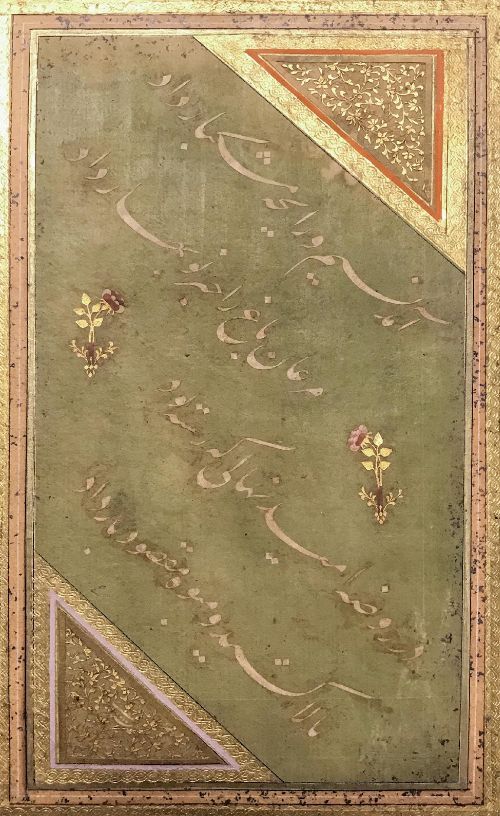

Calligraphic découpage / cut-work piece in nastaʻlīq (talik) signed by the calligrapher, Şehrî (Fol.22a in Isl. Ms. 438, Islamic Manuscripts Collection)
Enjoy this post from Sumeyra Dursun, 2023 Heid Fellow, drawn from her research in the Islamic Manuscripts Collection. Sumeyra is a doctoral candidate in the history of Islamic arts at Yildiz Technical University in Istanbul.
#libraries#archives#special collections#special collections libraries#libraries and archives#special collections and archives#islamic manuscripts#research fellowships#heid fellows#fellowships#hat sanatı#hattat#hattatlar#el yazma#yazma eserler#yazmalar#ottoman culture#ottoman history#turkish arts#turkish history#ottoman art#persian art#persian manuscripts#persian#cut out calligraphy#calligraphy#decoupage#cut work#papercut#paper cutout
6 notes
·
View notes
Text
{Sütçü İmam} Aslına sadık kalınarak kısaltılmıştır [1] : 🇹🇷
Sütçü İmam her zaman olduğu gibi bugün de sütlerini almış, simitlerini yapmış, dükkanda kalan işlerle ilgilenmekte idi. Atı Karayel'i ise dükkânının önündeki akasya ağacına bağlamıştı. Dükkânındaki işlerine devam ettiği sıralarda birkaç at kişnemeleri işitti. Camdan dışarıya baktığında İngiliz askerlerinin meydanda toplandıklarını hoşnutsuzca görmüştü...
İşine dalmışken bir ara camın tıklatıldığını fark etti. Birkaç İngiliz askeri ona işaret ediyordu. Sütçü İmam kendi kendine söylendi:
-Bunlar ne istiyorlar acaba?
Askerler camda dizili simitleri gösteriyorlardı.
-Simitler satılık değil, dedi Sütçü İmam.
Başını ve ellerini olmaz diyerek salladı. Bu işaretten bir şey anlamayan askerlerin sayısı da giderek artmaya başlamıştı. Kimisi para gösteriyordu.
-Satılık değil dedim! Satmıyorum!
Askerler bu kez süt içmek istediklerini işaretle anlatmaya çalıştılar. Sütçü İmam ise camda dizili simitleri öfkeyle toplamaya başlamıştı. Ardından dışarıda duran birkaç güğüm sütü almak için hamle yaptığında ise askerler buna engel olmaya çalışmıştı.
-Size satılık bir şey yok! Anlamıyor musunuz?!
Askerler gülüyordu. Güğümleri almak için birbirleriyle itişiyorlardı. Sütçü İmam güğümleri hırsla kaptığı gibi bir çırpıda yere boşalttı.
-Alın size süt, dedi Sütçü İmam, askerlere bakarak.
#sütçü İmam#kahramanmaraş#Maraş'ın kurtuluş mücadelesini başlatan kişi kimdir#zodiag666#cansu ayyıldız#türk tarihi#dünya tarihi#yakın tarih#tarihte bugün#tarih#türk#turkish history#Fransız Ermeni askerine ilk kurşunu sıkan türk#sütçü imam oku#zodiag666 sütçü imam#mustafa kamal#türkiye#vatan bölünmez#vatan sağolsun#🇹🇷#🇦🇿#şehitler ölmez#sütçü imam ve ingiliz askerleri
4 notes
·
View notes